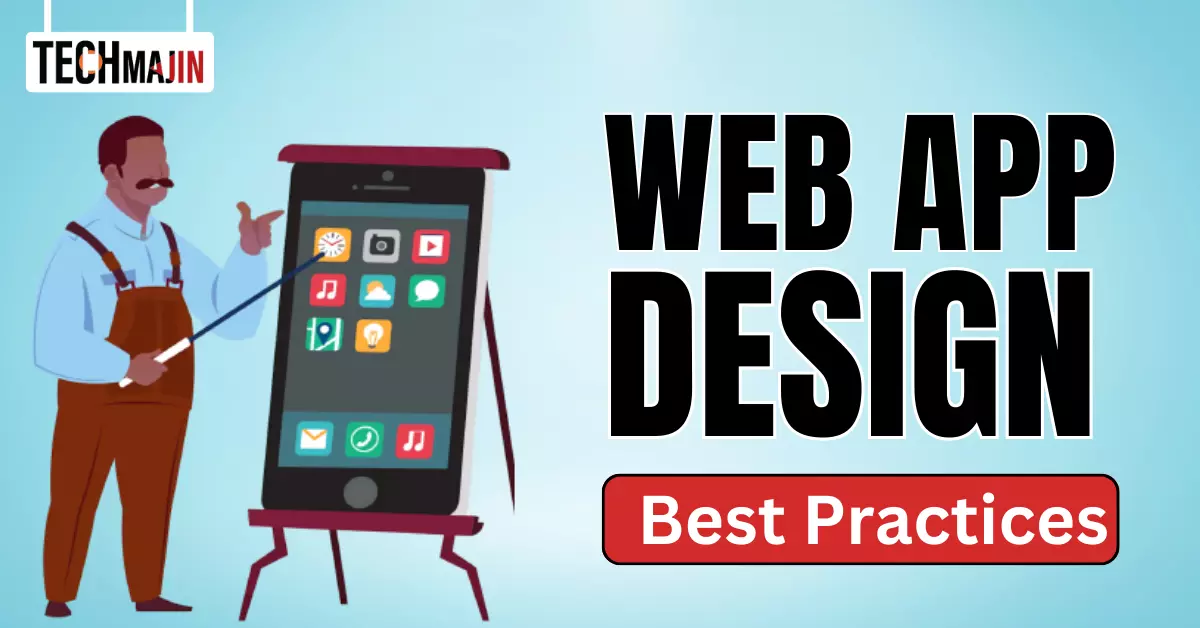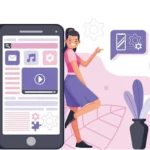In the digital age, applications have become an integral part of our daily lives. From managing our finances to staying connected with loved ones, apps shape our experiences in profound ways.
Yet, amidst the plethora of applications available, only those that prioritize a seamless user experience truly stand out. It’s not just about aesthetics; it’s about designing apps with the user in mind.
The Cornerstones of Brilliant Web App Design
Success in the digital application arena hinges on a design philosophy that not only captivates the user’s eye but also enhances their overall experience.
Brilliant web app design marries visual aesthetics with exceptional functionality, ensuring seamless accessibility and fostering deep user engagement.
Crafting an Intuitive User Interface (UI)
The gateway to user satisfaction in any app is its UI. A truly intuitive UI doesn’t make the user think; it navigates them naturally through their journey.
Consistency: A harmonized design language is vital.
- Uniform fonts present information in a digestible manner.
- Consistent color schemes and button styles offer predictability, making users feel at home.
Logical Flow: Users should not feel lost. A well-thought-out layout is crucial.
- Group related elements together for ease of access.
- Streamline processes to reduce unnecessary steps, enhancing efficiency.
Clear Call-to-Action (CTA): Every app has objectives, and CTAs are the bridges to those goals.
- Ensure CTAs stand out but don’t feel out of place.
- Employ compelling, action-driven language to nudge users.
Ensuring Responsiveness Across All Devices
As device diversity grows, adaptability becomes non-negotiable. Users expect a seamless experience, whether on a smartphone, tablet, or desktop.
Fluid Layouts: In the responsive design paradigm:
- Utilize flexible grids and layouts.
- Prioritize relative units like percentages over absolute units like pixels.
Test Extensively: In a fragmented device market, assumptions are dangerous.
- Emulate various screen resolutions to identify design breakdowns.
- Engage in real-world testing on different devices to ensure a universal design experience.
Making Accessibility a Core Principle
Accessibility isn’t just about complying with standards; it’s about embracing every user, irrespective of their physical or cognitive abilities.
Contrasting Colors: Visual clarity can’t be compromised.
- Use tools to test color contrasts, ensuring they meet recommended ratios.
- Avoid color combinations known to be problematic for colorblind users.
Keyboard Navigation: Not everyone uses a mouse. Your app should be fully operable via the keyboard.
- Implement a tabbing order that aligns with the logical flow of the app.
- Use clear visual indicators to show which element has keyboard focus.
Clear Fonts: Typography plays a crucial role in comprehension.
- Avoid overly stylized fonts that might compromise readability.
- Ensure font sizes are adjustable for those who need larger or smaller text.
Leveraging Modern Tools for Designing User-Centric Apps
As the digital world evolves, so do the tools available for designers and developers.
Leveraging modern toolsets can substantially streamline the app development lifecycle, ensuring high-quality outputs even under tight timelines.
Embracing No-Code Platforms
No longer is app development the exclusive domain of coders. No-code platforms have democratized app creation, making it accessible to virtually anyone.
Rapid Development: The beauty of no-code platforms is speed.
- Prototype ideas quickly, transforming concepts into tangible, testable products.
- Deploy fully functional apps in a fraction of the time traditional coding would require.
Flexibility: Adaptability is at the heart of no-code platforms.
- Drag-and-drop interfaces empower creators to iterate designs effortlessly.
- Rearrange elements, add features, or modify workflows without diving into complex code.
Best No Code Tool for Building an App: The market is flush with options. Yet, the best tool is subjective.
- Analyze your objectives: Are you prototyping? Building a robust app? Seeking scalability?
- Balance cost with capabilities. Does the platform support the features and integrations you need?
- Prioritize platforms known for their user-friendly interface and robust community support.
Also read: How to Learn Coding
User Feedback Loops
The user’s voice is paramount. Building feedback mechanisms can ensure your app continually evolves in line with user expectations.
Beta Testing: Before a full-scale launch:
- Offer early access to a limited user group.
- Collect feedback on usability, bugs, and potential improvements.
Iterative Design: App design isn’t static. It’s a cycle.
- Implement user feedback to refine design and functionality.
- Continuously retest and adjust based on evolving feedback.
Regular App Updates
The digital landscape is dynamic. Regular updates ensure your app remains relevant, functional, and in tune with user needs.
Bug Fixes: No app is perfect.
- Conduct regular audits to identify glitches.
- Allocate resources to fix bugs swiftly, ensuring a seamless user experience.
Feature Additions: Stay ahead of the curve.
- Monitor industry trends and user feedback.
- Introduce new features that add value and differentiate your app from competitors.
Strategies to Elevate User Engagement
Beyond design, engagement strategies ensure users not only download your app but also use it regularly.
Personalization
Users crave experiences tailored to them. Personalization deepens user connection and loyalty.
User Profiles: Transform app interactions:
- Let users set preferences, creating a bespoke app environment.
- Personalize content, notifications, and layouts based on user inputs.
Recommendations: Predictive algorithms can enhance user journeys.
- Suggest content, products, or features relevant to individual user behaviors.
Improve discoverability within the app, ensuring users find value at every turn.
Gamification
Making app interactions fun can significantly enhance user activity levels.
Rewards: Motivate user actions.
- Introduce badges, points, or tangible rewards for app interactions.
- Encourage repeat usage and deepen user investment in the app.
Leaderboards: A touch of friendly competition can spur user engagement.
- Highlight top users or those who’ve achieved specific milestones.
- Encourage users to outdo each other, amplifying app interaction rates.
Final Remarks
Designing user-centric apps is both an art and a science. By marrying brilliant web best app design with modern tools and strategies, developers and designers can create applications that not only meet but exceed user expectations. In the vast app ecosystem, it’s the user’s experience that distinguishes an ordinary app from an exceptional one.
FAQs
1. How to design UI for web applications?
Designing UI for web applications involves creating a user interface that is intuitive, visually appealing, and efficient. Consider factors like layout, color schemes, and typography, Don’t focus on one device and navigation to enhance user experience and engagement.
2. What is UI in a web app?
UI in a web app stands for User Interface. It encompasses all the visual elements and interactive components that users interact with while using a web application, such as buttons, menus, forms, and the overall layout.
3. What makes a good website UI design?
A good website UI design prioritizes user-friendliness and aesthetics. It should offer clear navigation, consistent branding, responsive design, legible text, and visually appealing elements to create a positive user experience and encourage user engagement.
4. What is the difference between UI and Web App?
UI (User Interface) is the visual and interactive aspect of a web app that users interact with directly. A web app, on the other hand, is the entire software application accessible through a web browser, including its backend functionality, database, and user interface. UI is a subset of a web app.






